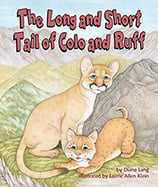Alignment to Standards for MD

| Grade | Number | Standard |
|---|---|---|
| 1 | SC-1.3.0.C.2.a | Examine a variety of living things and their offspring and describe what each parent and offspring looks like. |
| 1 | SC-1.3.0.C.2.b | Identify similarities and differences among the offspring and between the offspring and each parent. |
| 1 | SC-1.3.0.C.2.c | Are parents and offspring more similar than they are different? |
| K | SC-K.3.0.A.1.a | features (observable parts) of animals and plants that make some of them alike in the way they look and the things they do. |
| K | SC-K.3.0.A.1.c | Identify a feature that distinguishes animals that fly (as an example) from animals that cannot and examine a variety of animals that can fly to discover other similar features they might share. |
| K | SC-K.3.0.A.1.d | Compare ideas about how the features of animals and plants affect what these animals are able to do. |
| K | SC-K.3.0.D.1.b | describe and compare living things found in other states such as Texas and Alaska to those found in Maryland. |
| K | SC-K.3.0.E.1. | Develop an awareness of the relationship of features of living things and their ability to satisfy basic needs that support their growth and survival. |
| PK | SC-PK.3.0.A.1.d | Identify some of the things that all animals do, such as eat, move around and explain how their features (observable parts) help them do these things. |
| PK | SC-PK.3.0.C.1. | Observe, describe and compare different kinds of animals and their offspring |
| PK | SC-PK.3.0.C.1.a | Recognize and describe the similarities and differences among familiar animals and their offspring. |
| PK | SC-PK.3.0.C.1.b | Describe how offspring are very much, but not exactly, like their parents and like one another. |
| PK | SS-PK-3.6.0.E.1.a | Distinguish factual from fictional information (anthropomorphic) |